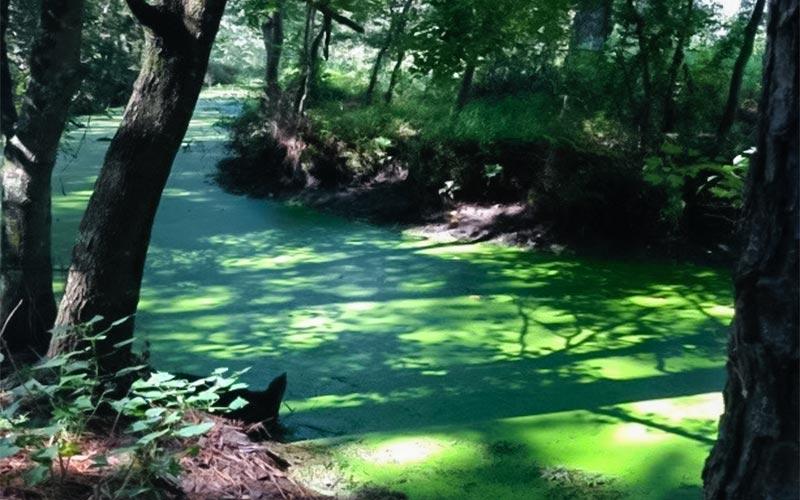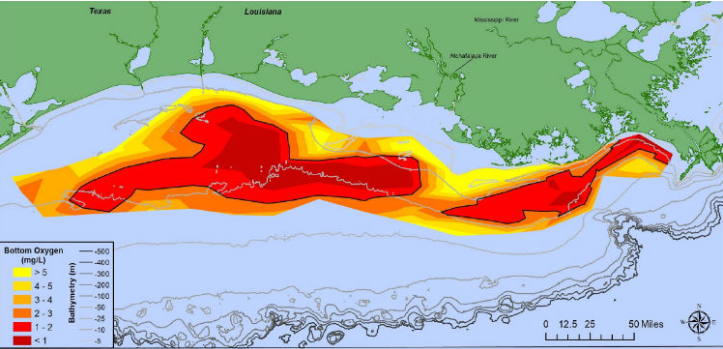Nutrients
Nutrients are ecosystem stressors. Really?
The first definition for “nutrient” encountered online is something like “a substance used by an organism to survive, grow, and reproduce.” That sounds like something parents would want to find in their children’s cereal.
When aquatic nutrients, the ones that stress estuarine ecosystems, are discussed, those relate to the substances needed by plants. Plant nutrients. These are more than a dozen minerals plants need (along with carbon dioxide, water, and sunlight) for primary production or the photosynthesis of glucose. The most important plant nutrients include the elements nitrogen and phosphorous (usually in the form of molecular nitrates and phosphates, respectively). All plants, including vascular land plants, emergent marsh plants, submerged aquatic vegetation (SAV), and algae need nitrates and phosphates to live. The problem, environmentally, is that there is NO shortage of these nutrients in coastal waters. To the contrary…
The problem with nutrients in coastal waters is over-enrichment or too much of a good thing. Stormwater runoff carries nitrates and phosphates into our coastal waters from sources that include fertilized crops, fields, golf courses, parks, and yards; pet, livestock, bird, and wildlife waste; waste water treatment plant effluents; and organic debris. High concentrations of nutrient in water can have harmful health and environmental effects, which, collectively, we call “eutrophication.”
When algae, including the toxic algae responsible for harmful algal blooms (HABs) like “red tides,” respond to an overabundance of nutrients, they grow explosively, or “bloom,” often forming unsightly scum on the water surface, blocking sunlight from reaching seagrass beds that rely on it, and sometimes even releasing toxins that degrade the health of aquatic critters and even humans.

Algae bloom resulting from excessive nitrate and phosphate concentrations in surface waters.
Excess nutrients in shallow estuarine waters stimulate the growth of epiphytes, algal species that grow on the surfaces of SAV. They cause losses in this important nursery habitat for estuarine fish and shellfish by encrusting leaf surfaces and thereby reducing light available to the plant leaves, especially when light transmission is already impacted by high levels of nutrient-stimulated phytoplankton.
The most common problem resulting from eutrophic algal blooms is when the excessive growth of algae runs its course, dies, and decomposes (by the actions of bacteria and fungi who need oxygen to consume the dead algae). This algal decay by microconsumers depletes dissolved oxygen from the water, causing fish kills and leaving coastal waters only to the fish and shellfish most tolerant to hypoxia (low concentrations of oxygen), while killing less tolerant organisms or forcing them to relocate.
In addition to its more-local effects in estuaries, nutrient-over-enrichment/eutrophication also occurs in larger scales in the world ocean. The Mississippi River Watershed, the world’s fourth-largest drainage basin, drains 1.245 million square miles in 32 states, or about 40% of continental U.S. land area. This basin is dominated by agriculture, primarily corn, soy, wheat, and collectively delivers more than 90% of all U.S. agricultural exports. With thousands of tons of runoff-carried fertilizer delivered to the River and Gulf of Mexico annually, an area varying in size but generally covering 6,000-7000 square miles of hypoxic (less than two parts per million dissolved oxygen in bottom waters) waters occurs between the inner and mid-continental shelf in the northern Gulf of Mexico between the Mississippi River delta and extending westward to the upper Texas Coast. This area of chronic hypoxia has come to be called “the Dead Zone.” The low oxygen conditions in the Gulf's most productive waters stresses organisms and may even cause their death, threatening living resources, including fish, shrimp and crabs caught there. Hypoxic conditions began to appear 50 years ago, when agricultural practices intensified in the Midwest.

At 6,952 square miles, the 2019 hypoxic zone in the Gulf of Mexico is the 8th largest ever measured in the 33-year record, measured from July 23 - 29. Red area denotes 2 mg/L of oxygen or lower, the level which is considered hypoxic, at the bottom of the seafloor.
According to a 2020 Feeding Ourselves Thirsty report by Ceres (2020), a credible sustainability non-profit organization, severe flooding in the Mississippi River Basin in spring 2019 delivered 156,000 metric tons of nitrogen (about 18% above the long-term average) and 25,300 metric tons of phosphorus (about 49% above the long-term average). Consequently, Louisiana State University (Turner and Rabalais, 2019) reported that in late July 2019 the Dead Zone covered 8,717 square miles of bottom, an area the size of the State of New Hampshire.




